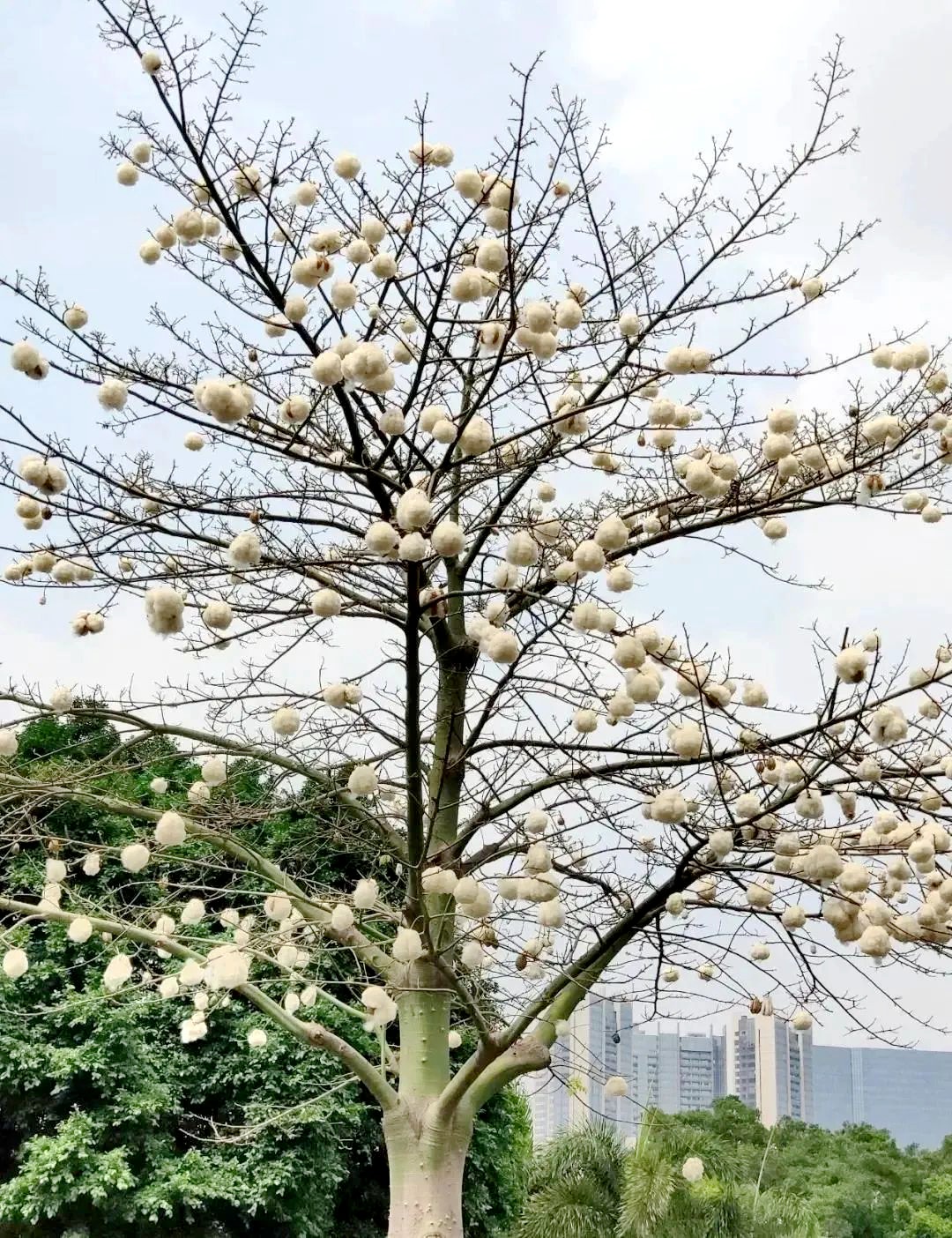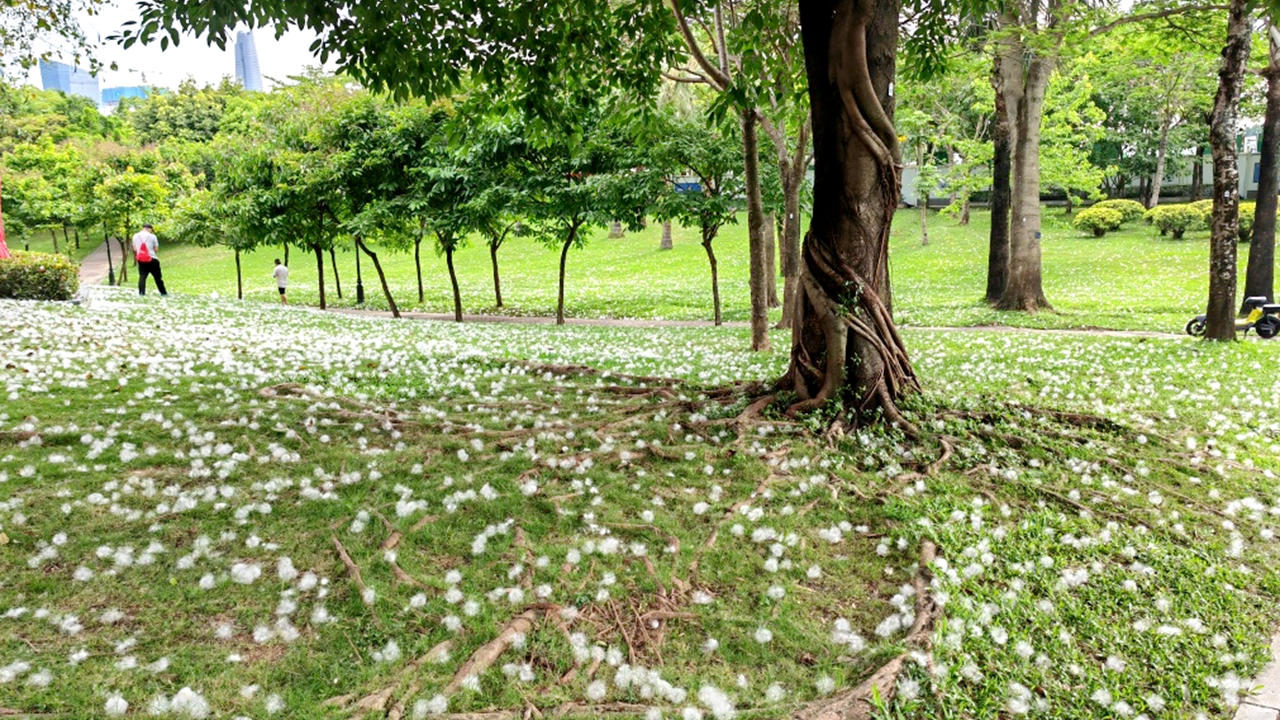Cottonwood season brings health woes for allergy sufferers
Writer: Tang Li | Editor: Zhang Zeling | From: Shenzhen Daily | Updated: 2024-04-10

Ripened fruits of the silk floss tree are like cotton balls. Photos from the “meilishenzhen” (“beautiful Shenzhen”) WeChat account
As the annual cottonwood season sweeps in with its flurry of fluffy seeds, a phenomenon known as “flying snow,” pedestrians find themselves in the midst of an airborne assault, with the pesky particles making their way into every unsuspecting nostril. For individuals prone to respiratory sensitivities, these conditions are nothing short of bothersome.
These seeds, produced by a variety of plants in the willow family, including poplar and willow trees, are primarily made of cellulose, akin to cotton, and typically drift through the air from April to May. Utilizing the power of the wind to disperse their seeds, these cotton-like particles pose a common woe for urban areas, especially prevalent in northern Chinese cities.

Cottonwood seeds coat the ground during the April-May period.
In Guangdong, particular attention is warranted for the silk floss tree, or the Ceiba speciosa tree. Blossoming from October to December and maturing from April to May, the silk floss tree sheds its outer covering upon fruit ripening, releasing cotton-like fluff reminiscent of cotton balls. As these fruits currently reach maturity, individuals with sensitivities could face severe adverse reactions. Inhalation of these particles can trigger symptoms such as runny noses, coughing fits, and asthma. Moreover, contact with the fluff on the skin may induce allergic responses like itching and reddened conjunctiva.
For those with allergic tendencies such as allergic rhinitis, dermatitis, conjunctivitis, and asthma, precautionary measures are vital when venturing outdoors. Wearing masks, glasses, and long sleeves can help mitigate exposure, while ensuring thorough removal of any cotton residue before returning home is advisable.
In case of accidental inhalation, efforts should be made to cough out the particles.
If skin displays allergic reactions post-contact, refraining from scratching is crucial, as open wounds can provide avenues for the entry of cotton particles or pathogens.
Should allergy medications fail to alleviate symptoms, prompt medical attention is imperative.
Apart from cotton fluff, pollen stands as another common allergen in spring. Individuals predisposed to allergies are advised to remain vigilant, implementing necessary preventive measures to safeguard their health.